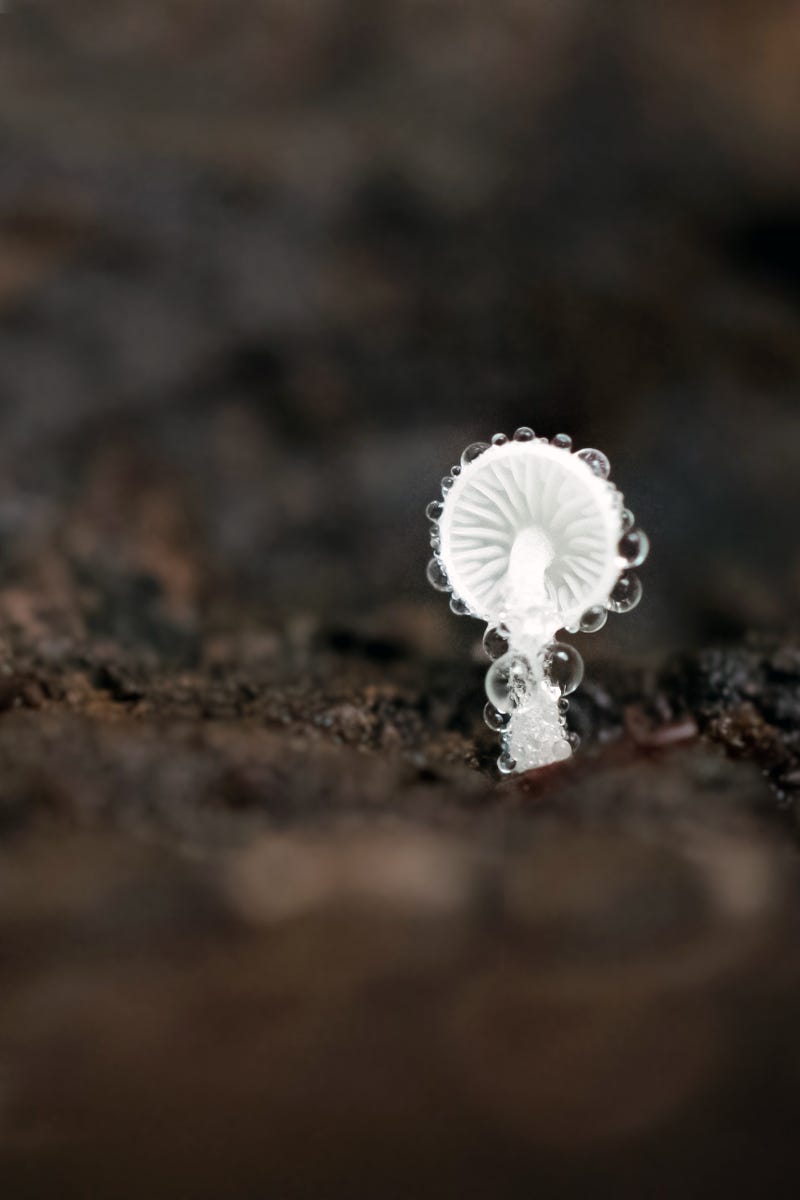Every year, the British Ecological Society (BES) runs the ‘Capturing Ecology’ photo competition to “celebrate the diversity of ecology”. This year’s finalists have just been announced and they definitely delivered on that goal. So let’s take a look at the charming and sometimes adorable moments that the photographers captured on film.
Worth a thousand words
The Overall Winner of the competition was an image of a Malagasy tree boa taken by Roberto García Roa, Ph.D., an evolutionary biologist at the University of Valencia. He wanted to showcase the plight of Madagascar, whose ecosystems have suffered severe damage at the hands of human poaching and fires.
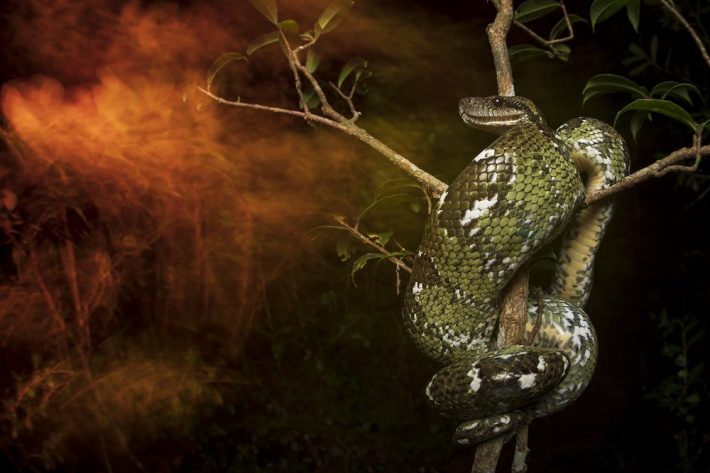
“Unfortunately, many areas of Madagascar are suffering huge anthropic pressures including poaching and fires, and big snakes are becoming increasingly difficult to see,” Roa explained on the submission. “During my visit to Madagascar, I had the pleasure of finding this outstanding snake and photographing it. To offer a dramatic scenario reflecting the conditions that these snakes are suffering, I used an external red light as a source of light and severe blurring to capture the environment.”
Professor Richard Bardgett, President of the BES, finds the image “stunning” and deserving of the Overall Winner prize, saying it “not only captures the beauty of the Malagasy tree boa, which is endemic to the island of Madagascar, but also its vulnerability, especially to hunting and fire.”
Nilanjan Chatterjee, Ms.C. at the Wildlife Institute of India, won the Overall Student Winner award for his picture titled Flames in Flumes, showing a plumbeous water redstart waiting for its hapless prey by a cascade.

Kapychka’s photograph of a birch forest in the autumn is the Overall Runnerup of the competition.
Up Close and Personal
A category aimed at “displaying the intricacy of nature using close-up or macro photography.”
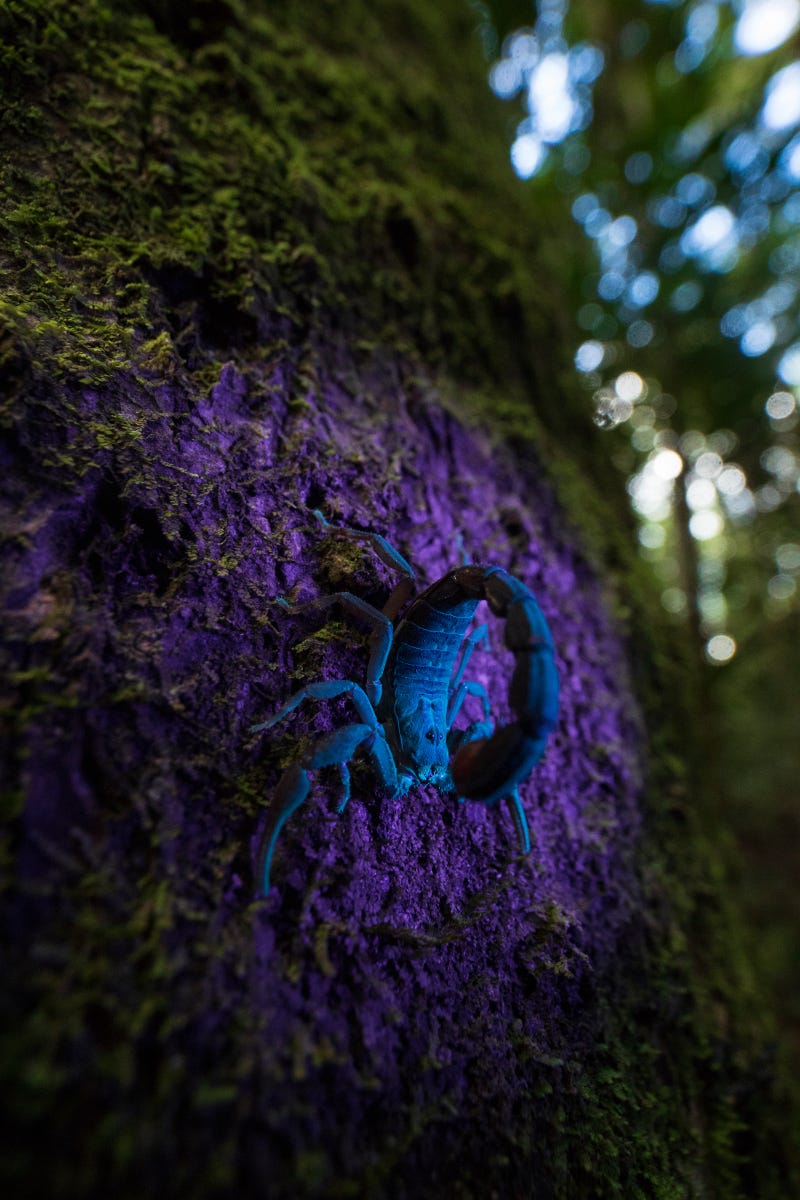
Not content with simply winning outright, Roa also claimed the Up Close and Personal award with this picture of a fluorescent scorpion glowing under UV light. Don’t worry, the scorpion wasn’t the end of him — either in real life or in this competition.
Khristian Valencia won the Student award in this category with the picture below. The frog he captured “exhibits one of its less common morphs” of the species.
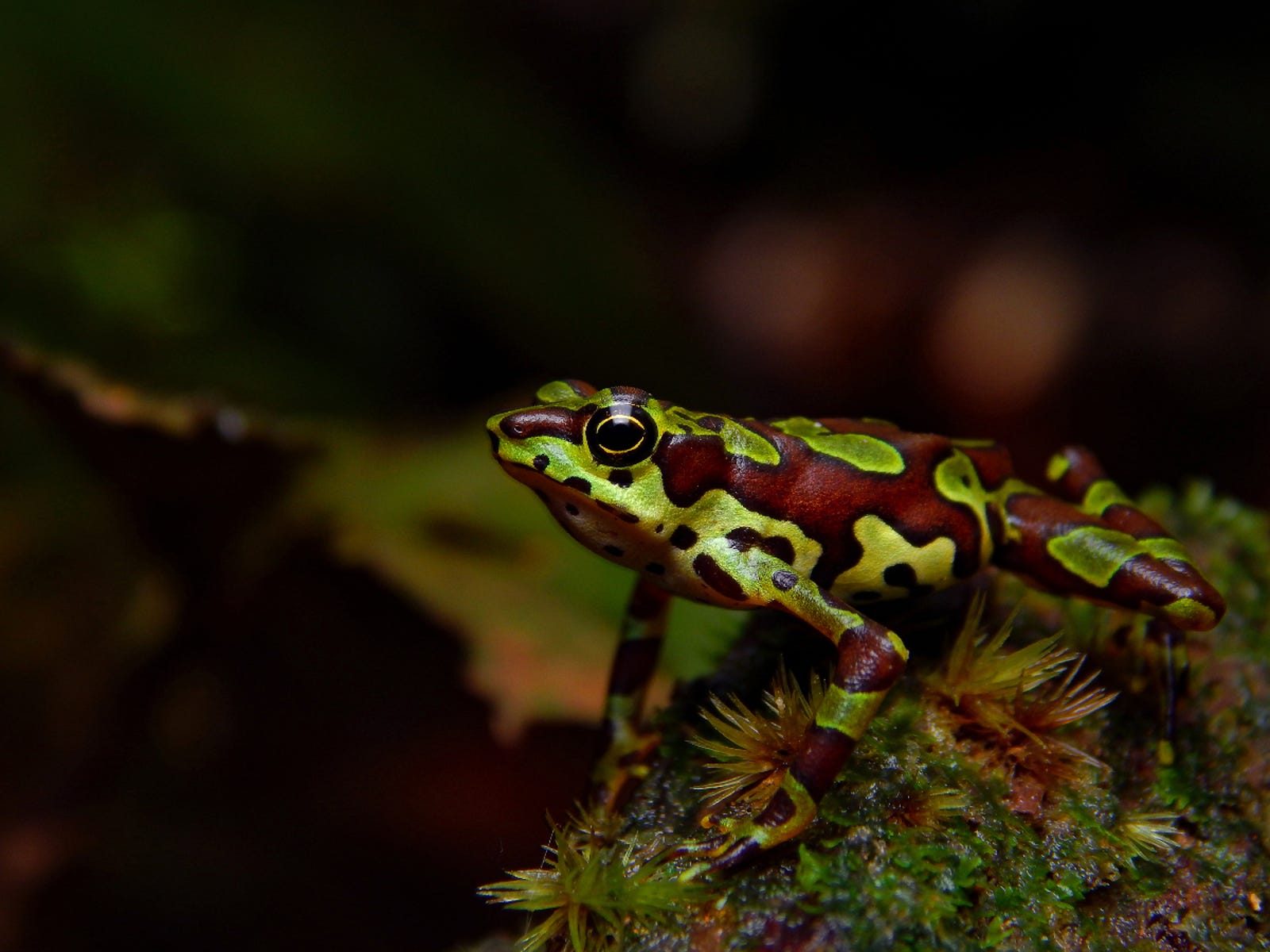
Dynamic Ecosystems
This category rewarded images that “demonstrat[e] interactions between different species within an ecosystem”
Roa claimed this award with this picture Small Warrior. It showcases a Malayan spider taking on an ant several times its size — and winning.
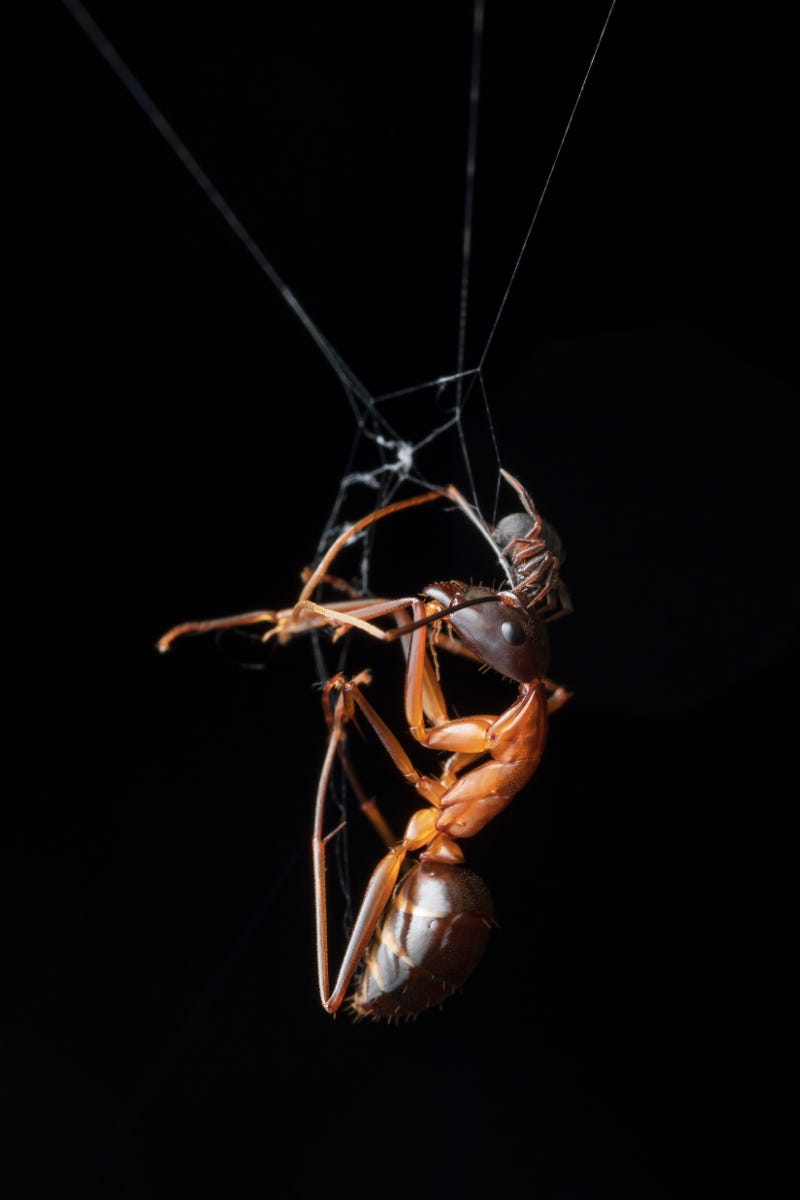
The student award in this category went to Pablo Javier Merlo from the Universidad Nacional de Córdoba. Are You Seeing the Same as Me? shows a domestic cow and a chimango — a relative species of the falcon — pondering something over a breathtaking visage of the Beagle Channel (the southernmost tip of South America). I don’t know what they’re meditating on, but this is my personal favorite entry in the competition.

Individuals and Populations
“A unique look at a species in its environment, either alone or as part of a population” was the subject of this category.
The winner here was Felix Fornoff from the University of Freiburg with Sleeping Still. The image shows leafcutter bee offspring developing in intricate nests of several leaven layers constructed by adult bees.
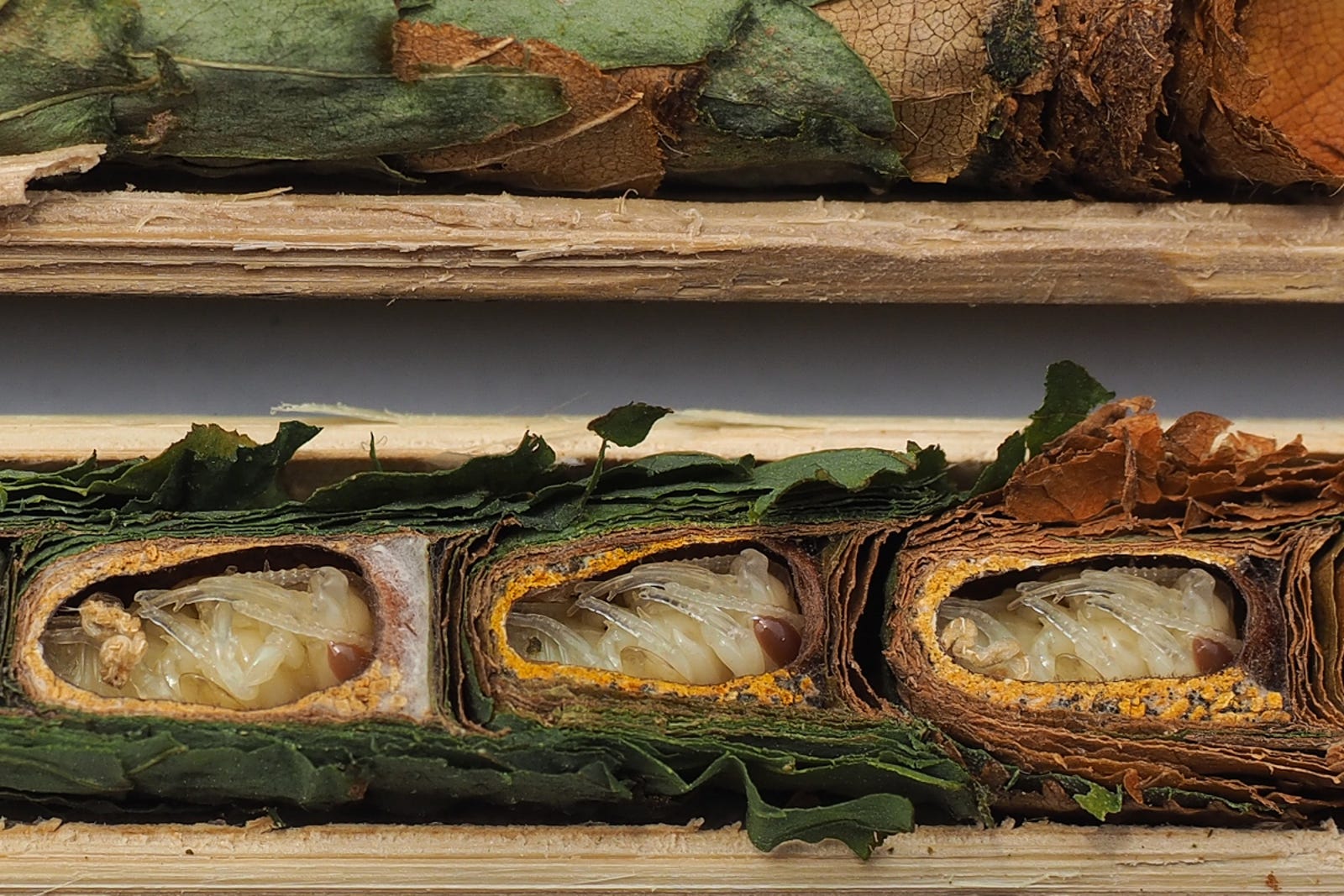
The Student prize in this category was awarded to Khristian Valencia from the University of Antioquia, Colombia. Watchful shows a dazzling black-and-white snake fixing its gaze on its (soon-to-be-caught) prey.
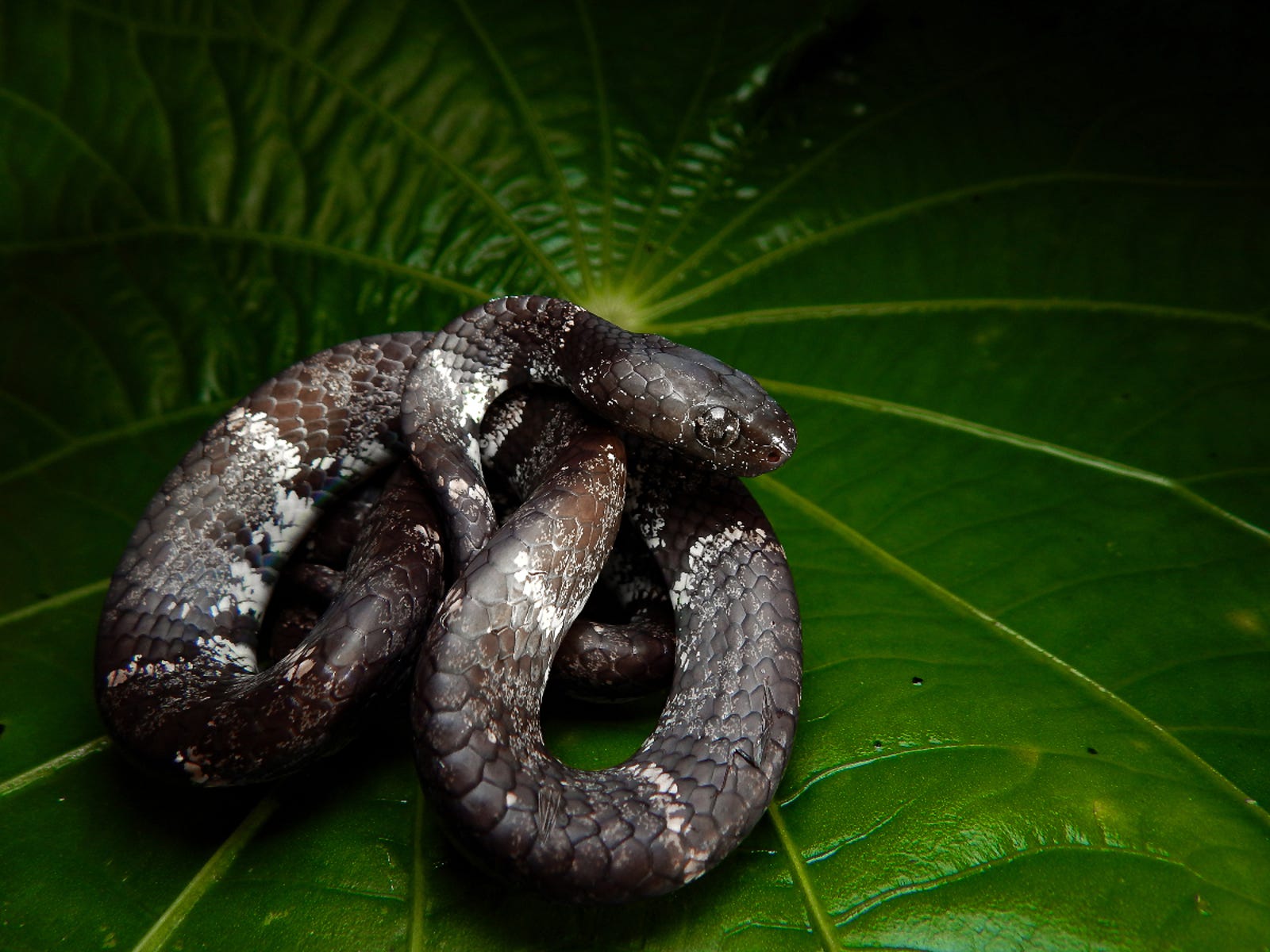
People and Nature
Looking for “an interesting and original take on the relationships between people and nature,” the award in this category went to Andrew Whitworth a Ph.D at the University of Glasgow and a member of the Osa Conservation group, for Why Did the Sloth Cross the Road?.
The photograph shows a female three-toed sloth navigating a busy road — luckily, she was spotted by the driver of an oncoming truck and everybody lived to see another day.
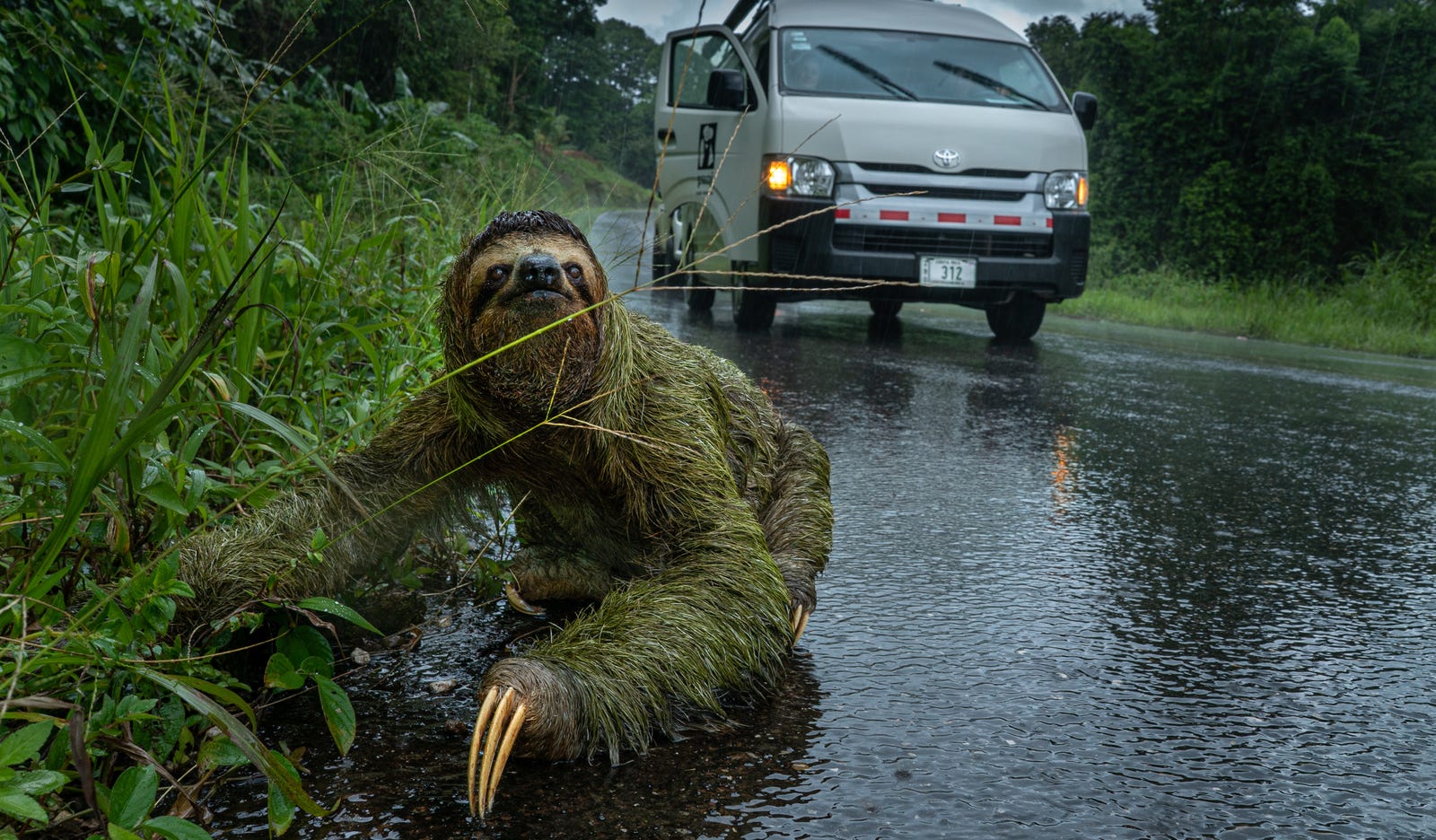
Gergana Daskalova, a student at the University of Edinburgh, Thawing Away, A human silhouette is dwarfed by the size of a retrogressive thaw slump on Qikiqtaruk-Herschel Island in Canada. The shifts resulting from these slumps can echo through the whole ecosystem. This photo was taken on an expedition supported by the National Geographic Society.
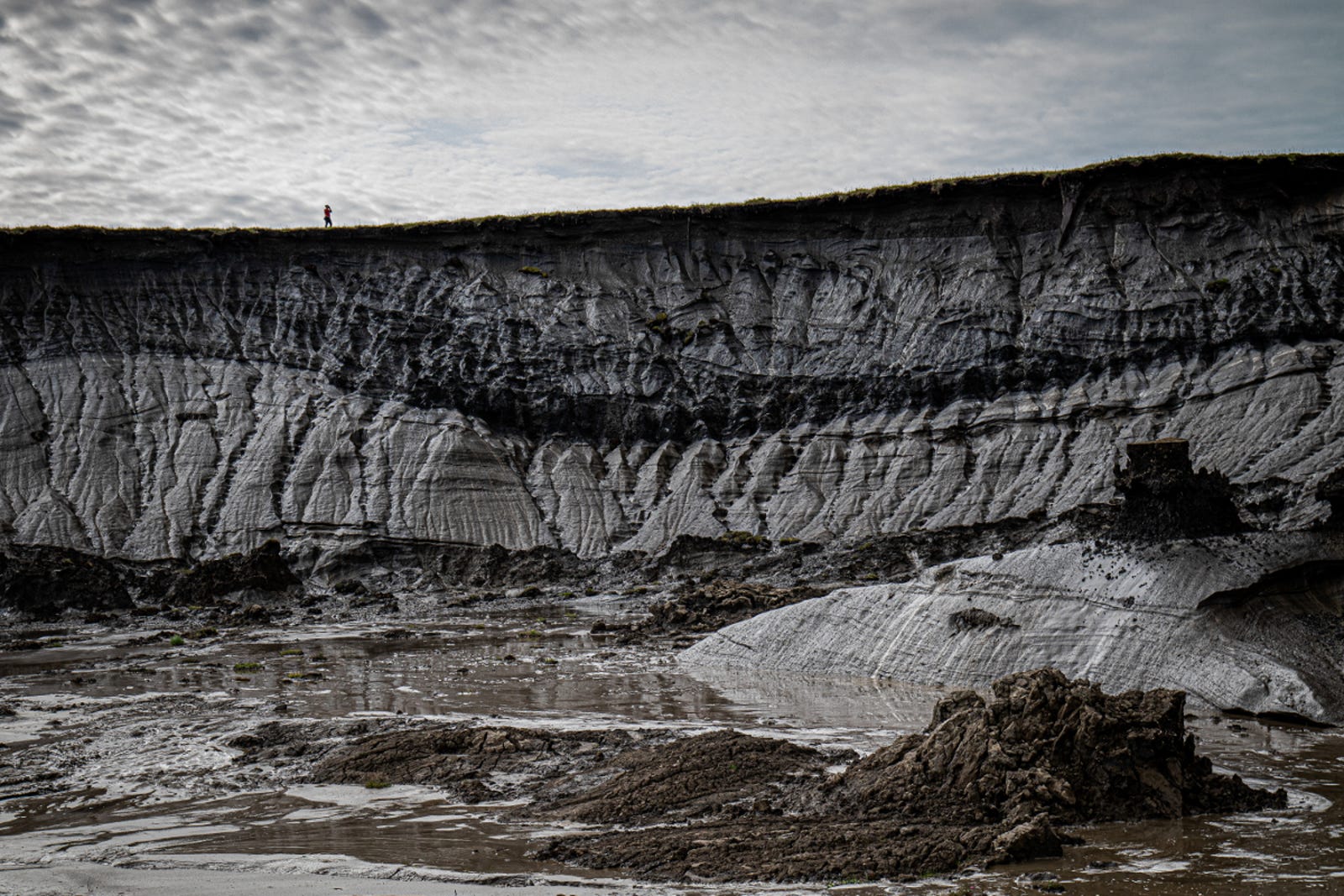
Ecology in Action
Molly Penny at the University of the West of England won this category for best “showcasing the practice of ecology in action” with The Rhino’s Annual Haircut. This annual procedure is protects the animals from poaching.
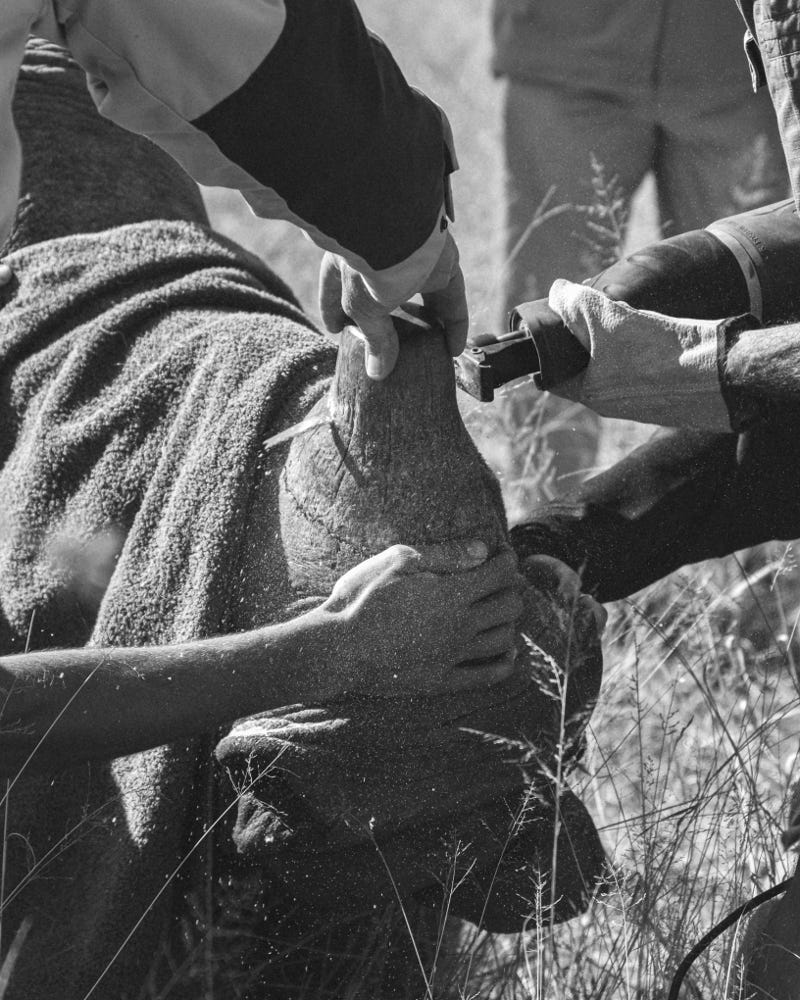
Gergana Daskalova at the University of Edinburgh won the student prize in this category for capturing how drones are helping us better map climate change with Capturing Tundra Vegetation Change.
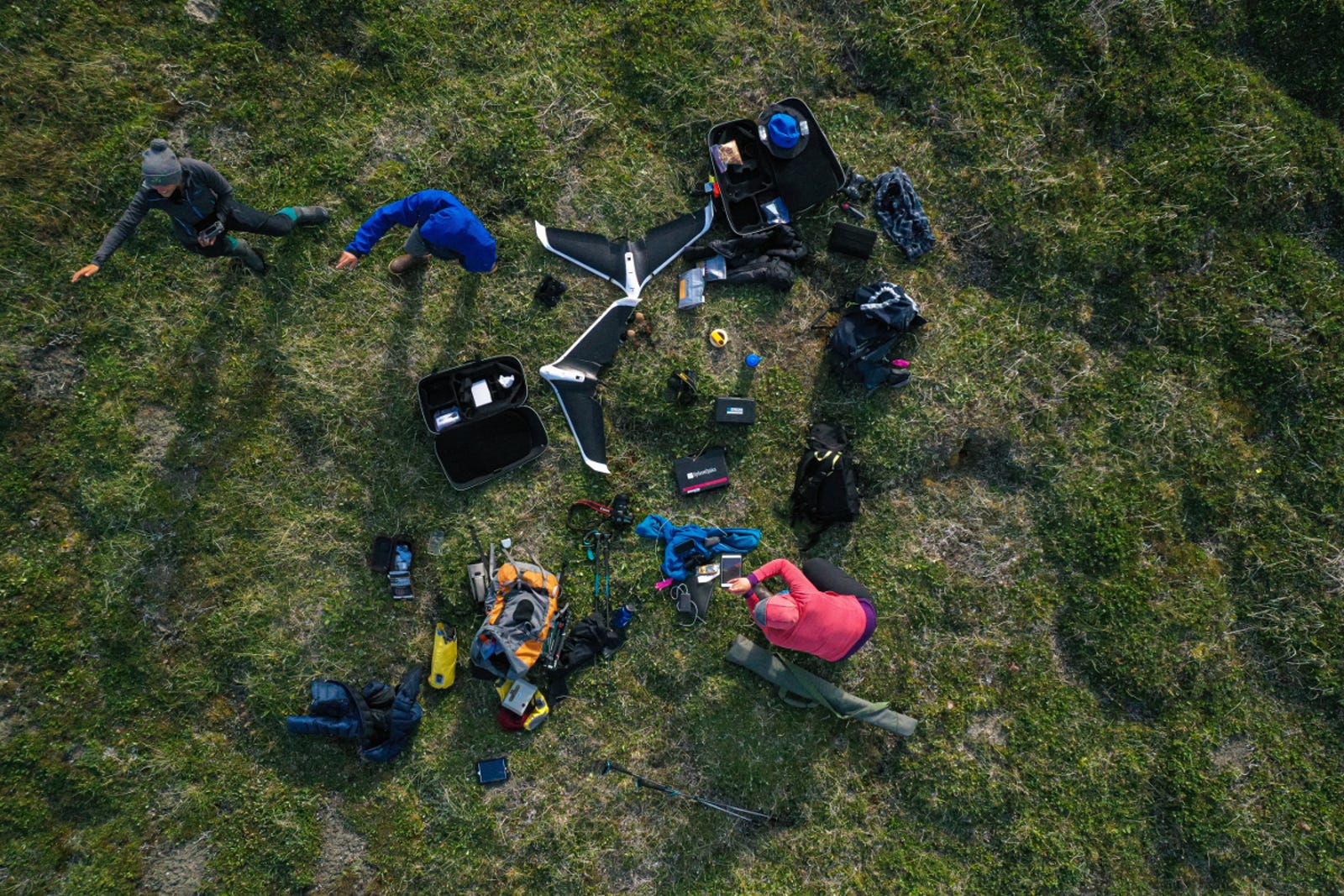
The Art of Ecology
The final category asked for “a creative and original take on photography denoting ecology”. Peter Hudson from Penn State University won with a picture of a heart-shaped flock of flamingos over Lake Magadi.
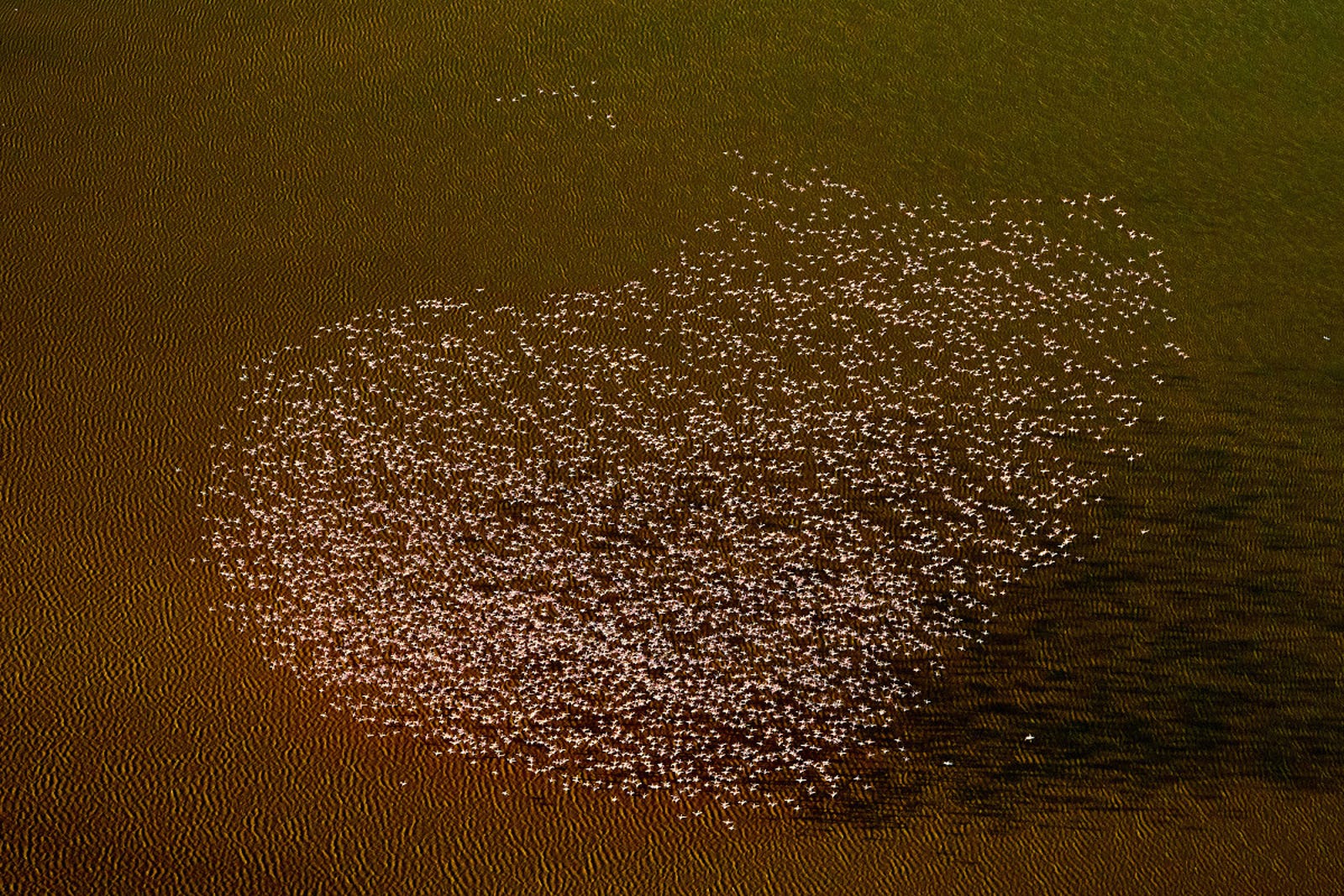
Sanne Govaert from Ghent University captured a tiny, dew-laden Mycena spp. mushroom growing inside a rotten tree trunk.
